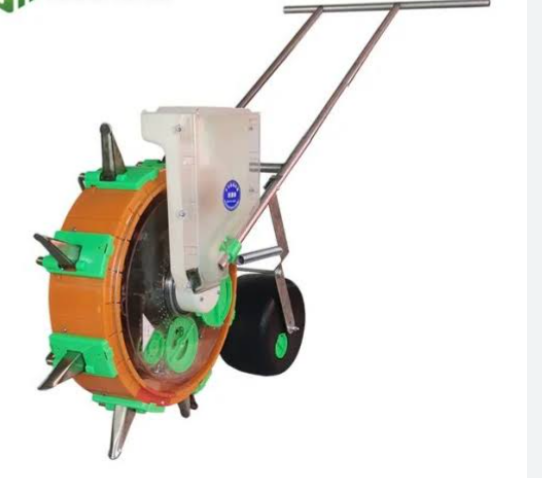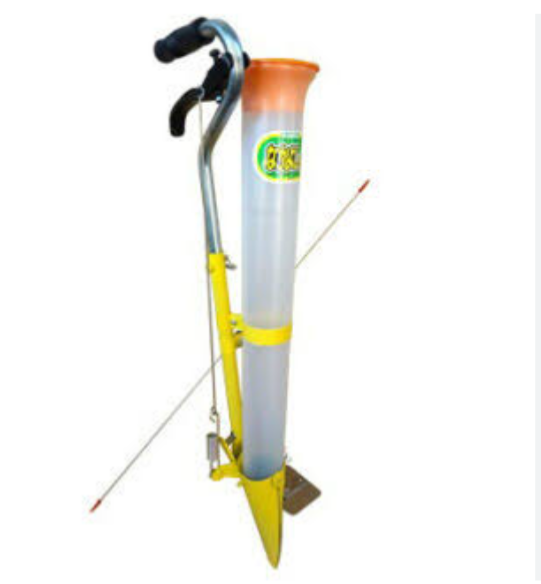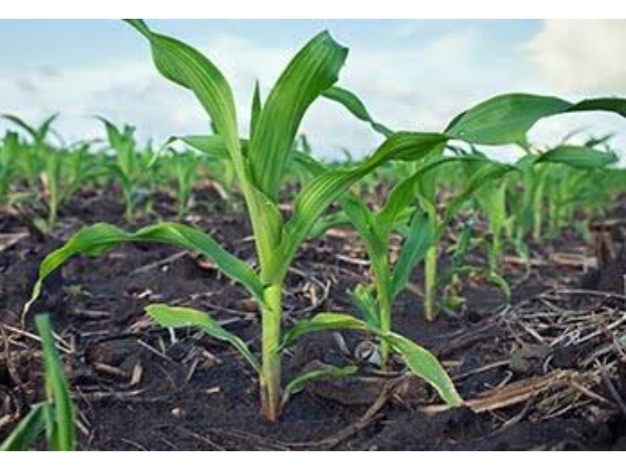
Agriculture is faced with many challenges. These challenges varies from one area of the world to another. For example, in Africa, challenges facing agriculture include how to produce more food in order to feed Africa’s growing population, conflicts, desertification, how to promote agricultural sustainability both in the field and in the whole economy, reduced growth of the farming population, loss of soil fertility, climate change, water scarcity, post-harvest losses, and limited market access etc. While in developed world, like Europe, U. S. A etc challenges facing agriculture include competition for resources, supply and demand for agricultural products, impact of technological advance on output and prices, the interaction between domestic agriculture and international trade, farm incomes, impact of agricultural policy on farm incomes and supplies, increasing pressures from climate change, recent COVID-19 pandemic, war, accessing land and financing and increasing knowledge and education etc. All these challenges need to be overcome inorder to meet the needs of the world population.
To achieve sustainable agriculture, farming practices that will help protect the soil from erosion and degradation, improve its quality and biodiversity, contribute to the preservation of natural resources, water and air, optimise yields and overcome other challenges faced in agriculture should be emback upon. One of such farming practices is Conservation Agriculture (CA). It is a sustainable approach to agricultural production.
WHAT IS CONSERVATION?
Conservation Agriculture is a farming system that promotes, minimum soil disturbance (i.e. no tillage), maintenance of a permanent soil cover, and diversification of plant species (FAO). It is a farming practice that improve soil quality, protect soil from environmental hazards like erosion, runoff and degradation, improve biodiversity, contribute to the preservation of natural resources (water and air), optimize yields and improve life quality.
Conservation agriculture aims to produce higher crop yield with lesser work. It also reduces production cost, maintain soil fertility and conserve water. It is a way to achieve sustainable agriculture and improve livelihood.
PRINCIPLES OF CONSERVATION AGRICULTURE
There are three basic principles of conservation agriculture. They include:
1. Disturb the soil as little as possible
2. Keep the soil covered as much as possible
3. Mix and rotate crops
Conservation agriculture do reverse degradation process which is inherent to conventional agricultural practices. It also ensures efficient utilisation of natural resources incombination with external inputs. For example, organic manure can be combined with synthetic fertilizers for efficient utilisation of the nutrient sources.
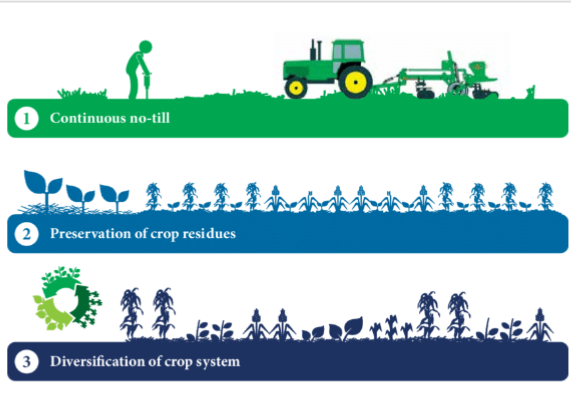
1. DISTURB THE SOIL AS LITTLE AS POSSIBLE : Conventional farming do involve heavy tillage operations whereby Farmers prepare the land using plough, Harrow, ridger etc driven by tractors which are heavy machines utilized prior to planting.Tilling the soil do promote mineralization of organic matter. Tools like hoe is also used to improve soil structure and control Weeds. But on the long run, soil structure is distroyed and soil fertility declines. Thus, soil health is destroyed.
In conservation agriculture, tillage is reduced or no (zero) tillage is practiced.
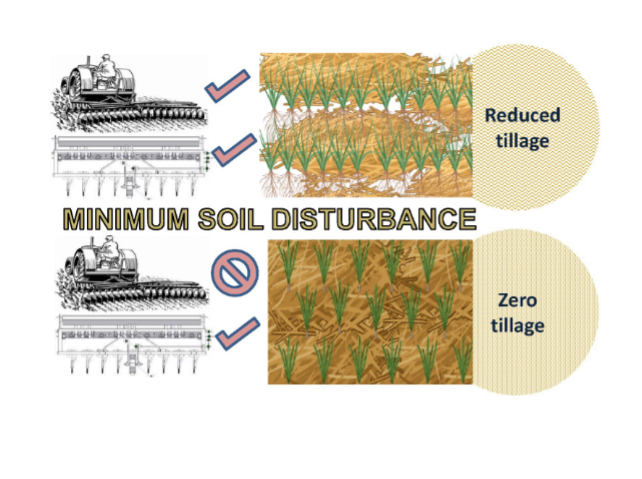
Tillage is only carried out in ripping planting lines or making holes for planting using hoe or Dibble stick without disturbing the whole land. This prevent soil compaction caused by heavy machines, cost and burning of fuel, reduce cost of production interms of purchase or hire of machines etc
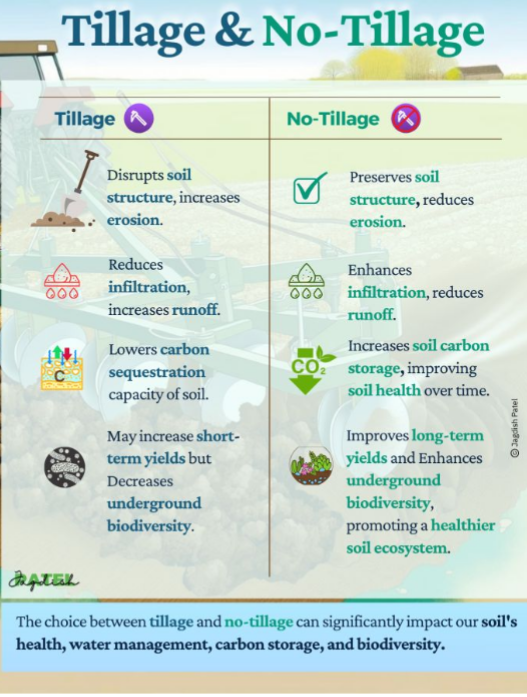
2. KEEP THE SOIL COVERED AS MUCH AS POSSIBLE: In conventional farming, crop residues are usually removed from the field. They are atimes burnt, fed to animals or mixed with soil during ploughing or hoeing. Removal of these residues leaves the soil bare, exposing it to erosion from heavy rain or strong wind and runoff. Nutrients applied to such soil are easily washed away causing environmental pollution (polluting surface water).
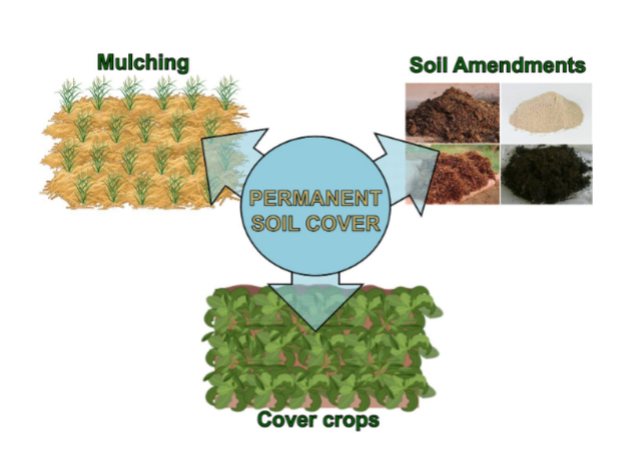
In conservation agriculture, crop residues are left on the field after harvest to decompose. These residues, mulch and cover crops help protect the soil from erosion and runoff and also limit the growth of weeds. These plant materials also contain nutrients absorbed from the soil during the plant growing period which where stored in their tissues. These nutrients are released back to the soil as the residues, mulch and cover crops decompose.
3. MIX AND ROTATE CROPS: The major farming practices embacked upon in conventional agriculture are monocropping and Monoculture where the same crop is planted season after season. This practices allows the survival of certain pest and diseases, weeds multiplication and result in low yield.
In conservation agriculture, mixed cropping and crop rotation are practiced. In mixed cropping, different mix of crops are planted on the same field. And crops are rotated in sequence on the same plot of land. These help to improve soil fertility, control pests and diseases, control weeds and overcome problems of crop failure etc.
These three principles must be applied at the same time to achieve a successful benefit of conservation agriculture.

Practicing conservation agriculture can be challenging but comes with lots of benefits. Farmers have to change their mindset about adopting this farming practice. Most farmers are adamant to change from their traditional conventional farming practice which had brought a lot of crises to soil health and the environment. For example, farmers are thought to believe that mechanised farming brings about high yield but do not believe that it also distroyed soil structure and causes soil compaction which is detrimental to crop yield etc. Through Conservation agriculture, cost of production is reduced, labour is saved, erosion and runoff are overcome, soil fertility is improved and soil has ability to hold sufficient amount of water. Higher yield is also realised. Farmers can save their energy and venture into other enterprise that will fetch
them higher income. Thus, overcoming their problem of poverty.
REASONS FOR ADOPTING CONSERVATION AGRICULTURE
There are several reasons why farmers adopt conservation agriculture. Some of the reasons include:
1. To improve yield
2. To reduce production cost
3. To overcome shortage of labour and farm power
1. TO IMPROVE YIELD: Yield of crops in many areas are reducing especially in developing countries. This is due to decline in soil fertility. Decline in soil fertility is caused by farming practices at the areas. Most farmers practice traditional farming system especially in the rural areas. While more educated farmers take to conventional farming system. Farms are allowed to fallow for years, tillage operation are carried out living the soil bare. Thus, exposing the land to erosion and runoff. Machines used during cultivation causes soil compaction etc. Therefore, farmers increase yield by applying fertilizers continously every planting season. This result in residual fertilizers left in the soil after crop harvest. With less moisture in the soil, plants become vulnerable to drought and wilt off.
Conservation agriculture on the other hand helps to reverse the trend. It restores soil fertility, prevent hard pan formation and soil compaction, increases soil moisture, optimize yield and improve production over the long years.
2. TO REDUCE PRODUCTION COST: Tillage operations involve purchasing or hiring machines and implements, fueling the machines and maintenance. This is highly expensive. Also fertilizer and other agrochemical prices and labour cost, all add together increases production cost. Market price of farm produce are falling, this makes it difficult for farmers to recoup back their production cost. Thus, they end up in losses.
Conservation agriculture enable farmers cut down cost of production and increase yield. Thus, making profit and having excess to reinvest into their farming business.
3. IT OVERCOMES SHORTAGE OF LABOUR AND FARM POWER : Most of the farmers nowadays are old men and women residing in rural areas. One of the reasons why there is reduction in the number of young fellows engaging in farming is because they see farming as hard work under the sun with little profit unlike white collar jobs. Thus, Farming is unattractive to them. Most of these young people now migrate to cities where there is social amenities, resulting in shortage of labour. Also, mechanised farming is expensive to practice. Most draught animals are malnourished, resulting in death. HIV/Aids and malaria has also contributed to migration of the young fellows especially in developing countries from rural areas to cities.
Through conservational farming, farmers can produce higher crop yield with lesser work. Farming practices that does not require much labour and farm power are used for production. It also open opportunities for young people to specialise in other services like repair of implements, seed production, vegetable growing, etc.
SOME CONSERVATION AGRICULTURAL PRACTICES
1. Hand cultivation using hoe
2. Digging small planting holes in line and at planting distance without disturbing other areas where there is no planting hole.

3. Application of compost or manure to the planting holes before sowing rather than chemical fertilizers to improve soil fertility
4. The compost and manure will also help improve moisture holding capacity of the soil
5. Sowing of cover crops between the planting holes to protect the soil from erosion and run off and suppress weeds.
6. Hand weeding or use of matches to slash the weeds
7. Mixed cropping and crop rotation practices
8. Use of draught animals to till the ground.
9. Use of subsoiler to break hardpans
10. Animal drawn ripper can be used to make planting furrows
11. Hoe or knife roller or herbicides can be used for contol weeds
12. Planting of cover crops to smother weeds and control evaporation
13. Leaving crop residues on field to control Weeds and supply nutrients back to soil
SOME ADVANTAGES OF CONSERVATION AGRICULTURE
Some of the benefits of conservation agriculture include
1.It saves labour and labour cost
2. It saves cost of fuel needed to operate tillage machines,
3. It increases yield,
4. It reduces run-off and erosion that can degrade soil
5. It reduces cost of agricultural production.
6. It improves soil properties,
7. Increases biodiversity,
8. It reduces CO2 emissions that can cause green house gas emission or climate change
9. Increased carbon sequestration,
10. It result in less contamination of downstream water, reduction of floods and landslide etc.
DISADVANTAGES OF CONSERVATION AGRICULTURE
As conservation agriculture is helpful in feeding the growing population, it also comes with several negative impacts on soil systems. The major constraint of conservation agriculture is the farmers mind set towards the farming system. Farmers are adamant and do not want to change from their traditional conventional farming practices to the new system of conservation agriculture. Other limitations of conservation farming include:
1. groundwater pollution,
2. poor nutrient-use efficiency,
3. waterlogging,
4. salinization,
5. In absence of fertilizer, minimum tillage may lead to nutrient immobility causing farmers to experience reduced yields
6. Decomposition of crop residues can lead to short term nitrogen immobilization because of increased activity of soil organisms that lock up nitrogen in their bodies
7. Even though tilling allows incorporation of residues and thereby, hastening decomposition process, it allows nutrients to be available for next season only
8. reduced tillage greatly increases weed pressure and it push for use of more labourers for weed control, but in Conservation agriculture , this constraint can be overcome with herbicides
9. Minimum tillage without herbicides faces challenge of controlling perennial weeds, mulch sometimes favours crop pests infestation, especially termites
10. Furthermore, maintaining mulch may lock up nitrogen, requiring increased fertilization in short term .
DIFFERENCES BETWEEN CONVENTIONAL AND CONSERVATION AGRICULTURE
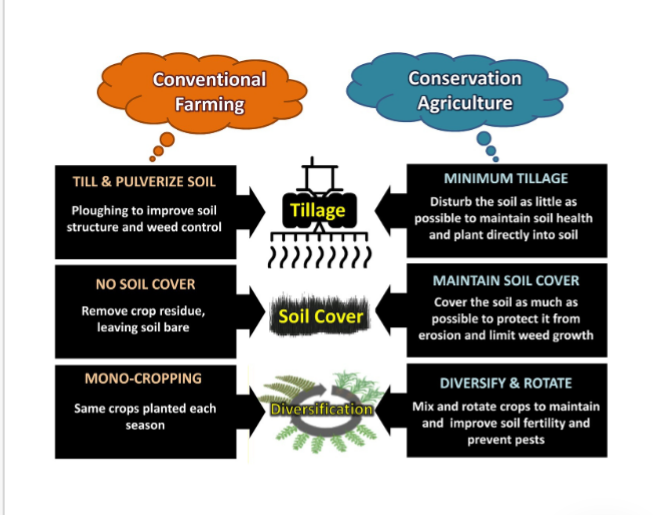
1. CROPPING SYSTEM: the types of cropping systems used in conventional agriculture are monocropping or Monoculture. While farming practices in conservation agriculture are diversified or crop rotation systems
2. TILLAGE OPERATION: Conventional Agriculture practice employ mechanized tillage while conservation agriculture involves minimum or no (zero) tillage
3. LABOUR REQUIREMENT : conventional agriculture relies heavily on manual labour while conservation agriculture relies on few or no labourers and minimal mechanized farming
4. TIMING: the farming practices in conventional agriculture takes a longer time due to tillage operations. Planting can only be done after rains begins. While conservation agriculture is a timely operational practice. Planting can be done before the rain start.
5. SOIL COMPACTION: Conventional agricultural practices leads to soil compaction. Heavy machines used for tillage are the main causes of the compaction. While in conservation agriculture, no soil compaction occurs.
6. LIVESTOCK : In conventional farming, livestock are allowed to graze on the stubble, they trample and compact the soil and remove all vegetation leaving the soil bare and exposed to erosion. While in conservation farming, control grazing is practiced. Farm land is fenced to keep animals out completely. Some of the cover crops can be cut and used to feed the animals. Or they are fed with fodder planted on separate plot.
7. FERTILIZER APPLICATION: in conventional farming, Fertilizers can be applied before or at planting. Soil fertility management relies mainly on inorganic fertilizers. While in conservation farming, Fertilizers can be applied long before the rains especially manure and compost. Soil fertility management relies on compost, manures and supplemented by inorganic fertilizers. Legumes are major source of nitrogen.
8. WEEDING: Weeding can be done 3 to 4 times during the plant growing periods. Hoe’s and cultivators or herbicides can be used to control Weeds in conventional farming. While in conservation farming, cover crops, mulch, slashing using cutlass, or spraying herbicides can be used to control Weeds.
9. HARVESTING : In conventional agriculture, harvesting is done by hand or use of harvesters. Straws and stoves are removed from the field and used as livestock feed or the residues are burnt. In conservation agriculture, harvesting can be done by hand or tools. Straws and stovers are left on the field to cover the soil surface and decompose to increase the organic matter content of the soil.
10. WATER INFILTRATION: In conventional farming, rate of water infiltration is low. While in conservation agriculture, rate of water infiltration is high
PROMOTING CONSERVATION AGRICULTURE
Conservation agriculture may be difficult for people to accept because it goes against most of their believes. For example, to say ploughing distroyed the soil and environment can be very challenging to believe as people are being thought that mechanised farming makes farming easier and faster with high yield. People’s mindset must be changed for conservation agriculture to be accepted.
Ways of promoting conservation agriculture include:
1. TRAINING : farmers, extension personnel, agriculturist, input suppliers etc should be properly trained through seminars, workshops, in school training, etc
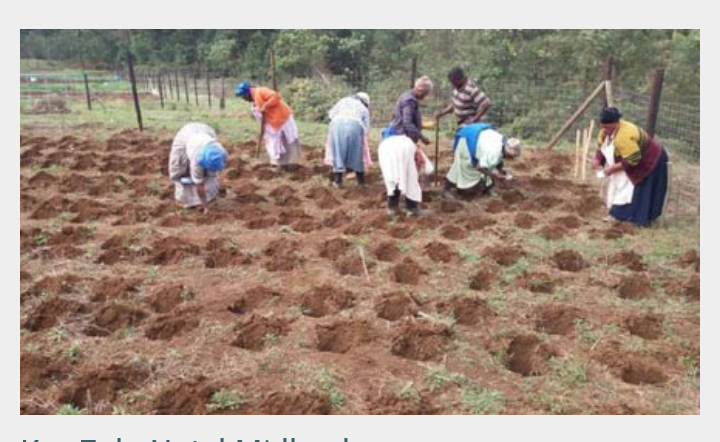
2. EXTENSION SERVICES : Government extension agents can advice farmers on these new farming system. The advice should be accompanied with training and demonstrations on field.
3. FARMERS FIELD SCHOOLS AND CLUBS : Extension services may extend to getting farmers together to study more on farming. Farmers clubs like young farmers club for schools and colleges may be set up in schools to train young boys and girls on what conservation agriculture is.
4. FARMER ORGANISATIONS : farmer organisations can provide support to farmers and train them on the farming syatem
5. STAKEHOLDER PARTNERSHIP : stakeholders like extension agents, NGOs, various levels of government parastatals, and private sectors can assist in promoting conservation agriculture etc.
Others include churches, mosques, entrepreneurs, etc all can help promote conservation agriculture.
SOME EQUIPMENTS USED IN CONSERVATION AGRICULTURE
1. TREATMENT OF COMPACTED SOILS AND HARDPANS: Ripper and subsoiler
2. PLANTING: Dibble stick, matched, jab planter, automatic planter, semi-automatic planter etc
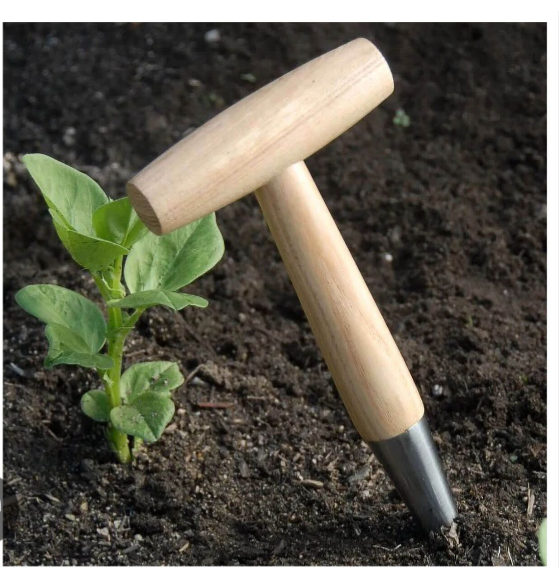
3. WEEDING: knife roller, animal drawn weeder, weed wipers, knapsack sprayers, handbpulled sprayer etc.
